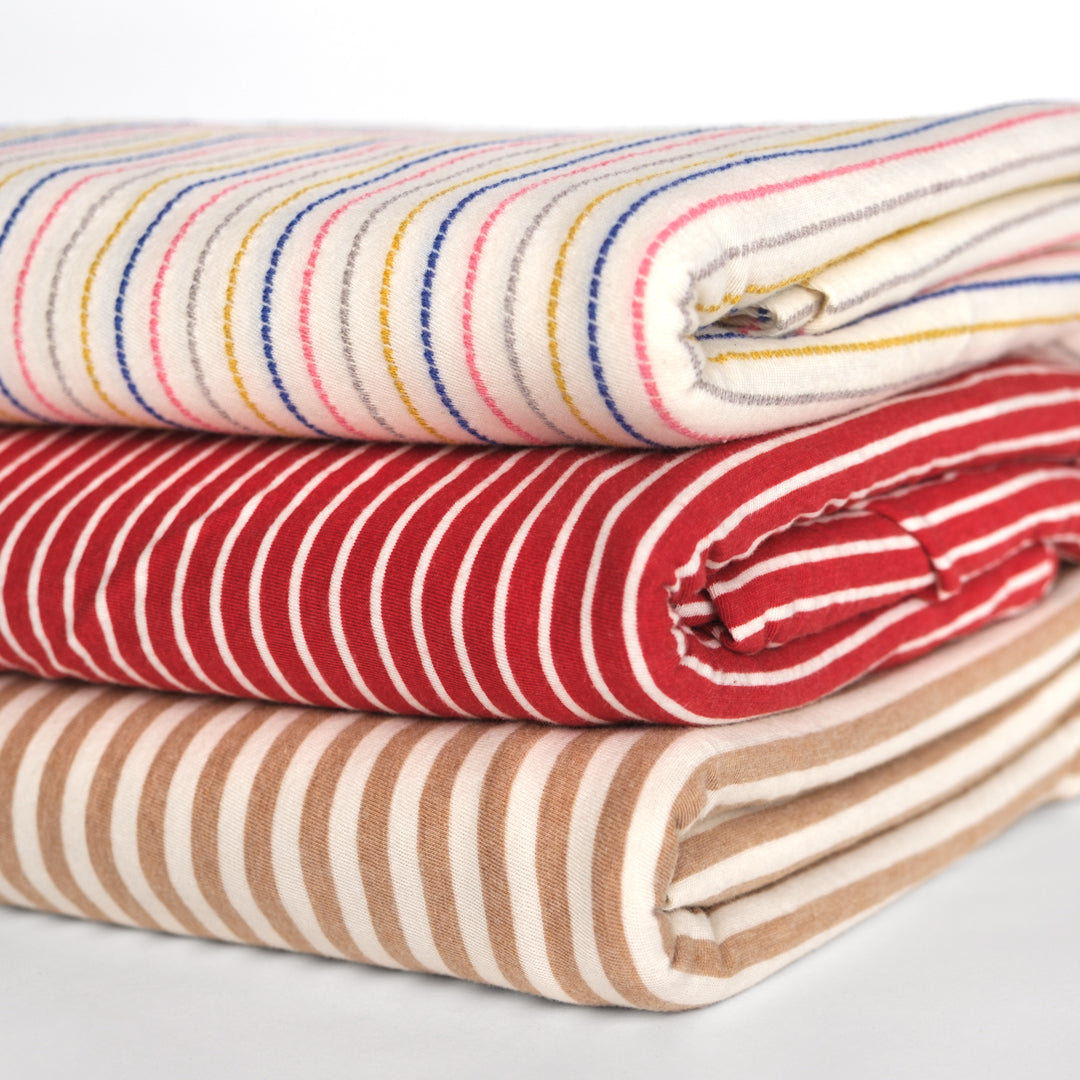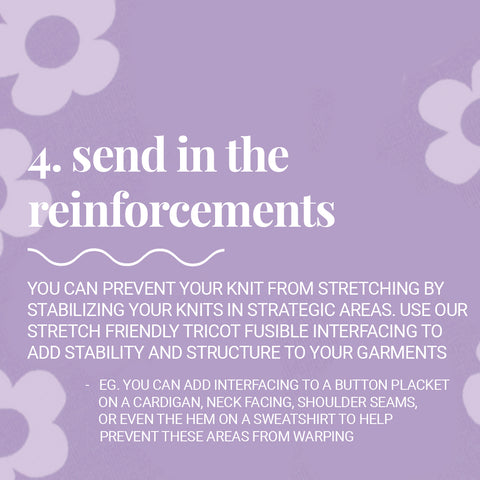
Birdie Tips for Sewing With Knits
It’s no surprise that here at Blackbird we love our knits! From fleece to french terry, rib knits to jersey, we love the comfort and versatility of knit fabric, but learning to sew with knits can be an intimidating feat. Whether you’re an experienced sewist or new to sewing, handling stretch fabric can pose a real challenge.
We asked all the Birdies for some words of wisdom and have compiled a list of our top 5 tips for working with knits!
1. Ballpoint needles are your friends.
Using a needle with a rounded tip, often called a ballpoint needle, when working with knits will help to avoid skipped stitches and prevent damage to the fabric. A ballpoint needle gently pushes the fibres aside and glides through the knit, rather than piercing it, preventing runs or tears. Choose a smaller needle (Jersey/Ball Point 70/10 Needles) for lightweight knits and a larger needle for heavyweight fabrics (Jersey/Ball Point Needles - Assorted Sizes). For a professional finish on your hems, try a stretch twin needle (Stretch Twin Needle - 2.5/7.5, Stretch Twin Needle - 4.0/7.5). This needle creates two parallel rows of straight stitches on top with a zig-zag stitch underneath for a flexible stretch finish.


2. Resist the urge to stretch.
It’s a no-brainer! Knitted and woven fabrics have different characteristics, so we need to handle them differently while sewing. Rather than pulling, gently guide your fabric through your machine, as pulling will result in warped edges and seams. You may wish to use a walking foot to help with this.

3. No serger, no worries!
Contrary to popular belief, you don’t need a serger to make knit garments. A simple zig-zag stitch works perfectly well for joining seams, finishing edges, and keeping them stretchy! Our general rule of thumb for most knits is a narrow zig-zag stitch width with a standard length (2.5mm). Keep in mind, different fabric weights will require different settings. It’s also completely up to personal preference what look you like, so definitely play around with it! You’ll want to lower your tension and do a few tests on knit scraps as well to make sure it’s just right.

4. Add reinforcements.
To prevent your fabric from stretching, you can stabilize your knits in specific areas. Use stretch-friendly interfacing like our Tricot Fusible Interfacing to add stability and structure to your knit garments. For example, adding interfacing to the neckline, shoulder seams, or even the hem on a sweatshirt helps to prevent these areas from warping. For a knit cardigan, you may want to add interfacing to the placket before adding the buttonholes to make the process easier.

5. When in doubt, press!
You might do everything right and still end up with puckered or wavy seams and that’s okay! Don’t panic - it’s all a part of the learning process. Applying a little steam above the area will help flatten out warped seams.
Getting comfortable with sewing stretchy fabrics takes a little time and practice. Don’t be afraid to start because once you get the hang of it, it’s so much fun!
Check out all of our knit fabrics here.







Leave a comment
This site is protected by hCaptcha and the hCaptcha Privacy Policy and Terms of Service apply.